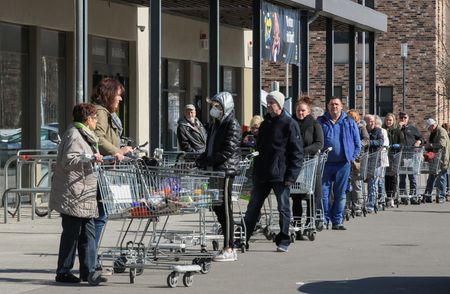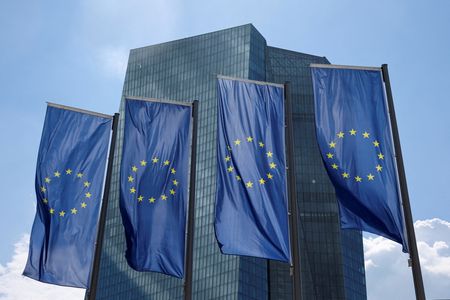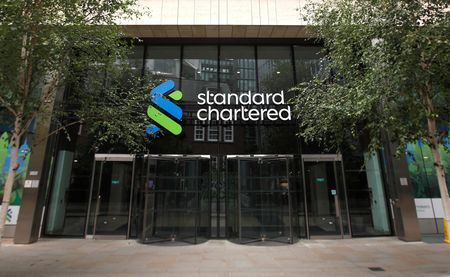FRANKFURT (Reuters) -Euro zone households increased their savings further in the second quarter, confounding expectations that historically high rates would reverse and unleash private consumption to support growth when exports struggle, data from Eurostat showed.
The household savings rate rose to 15.4% in the second quarter from 15.2% three months earlier, Eurostat said on Tuesday, and stands well above the 12% to 13% range recorded in the pre-pandemic years.
Households’ investment rate, however, has stopped falling and stood at 9% for the past year, the data showed.
Households have been saving more of their income, rebuilding wealth lost to the post-pandemic inflation surge, and building buffers due to the persistent flow of negative news from tariffs to weak competitiveness and lukewarm growth.
But economists had long predicted a reversal since real wages have now largely caught up after the inflation surge and unemployment is hovering near all-time lows. The ECB had anticipated a fall to 14.7% this year and further falls in the years ahead.
The rise in the savings rate is in contrast with the U.S., where it has been on a decline for much of the year and dipped below 5% in August.
With net exports likely to suffer in the second half, economists bank on more buoyant household spending to prop up growth, but August retail trade expanded just 1.0% compared to a year earlier, suggesting that households remain cautious.
In a potentially ominous sign for growth, the profit share of euro zone firms continued to decline in the quarter, Eurostat added, extending its downward trend since the start of 2023 and pointing to a decline in profitability as wages rise faster than value added.
(Reporting by Balazs Koranyi; Editing by Toby Chopra)










